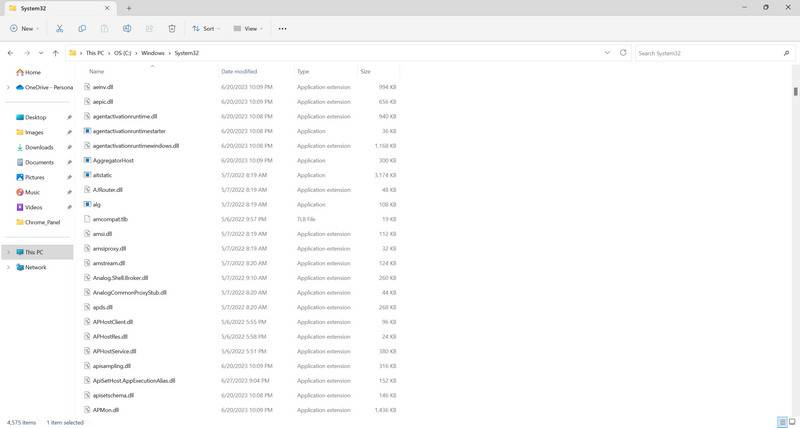Steamclient64.dll is a dynamic link library file that is associated with the Steam gaming platform. It plays a crucial role in the proper functioning of Steam and is responsible for handling various tasks related to game launching, networking, and communication with the Steam servers. However, like any other DLL file, steamclient64.dll can encounter errors or become corrupted, leading to issues with Steam and the games it supports.

This Article Contains:
Common Steamclient64.dll Errors
When steamclient64.dll encounters an error or becomes corrupted, it can manifest in various ways. Some of the most common errors associated with this DLL file include:
- Steamclient64.dll not found
- Steamclient64.dll is missing
- Steamclient64.dll crash
- Steamclient64.dll failed to load
- Steamclient64.dll is either not designed to run on Windows or contains an error
If you encounter any of these errors while using Steam, it is important to address them promptly to ensure the smooth functioning of the platform and the games you play.
Causes of Steamclient64.dll Errors
Several factors can contribute to steamclient64.dll errors. Understanding these causes can help you troubleshoot and fix the issues effectively. Here are some common causes:
- Corrupted or missing steamclient64.dll file: The DLL file may have become corrupted or accidentally deleted, leading to errors.
- Malware or virus infection: Malicious software can infect DLL files, including steamclient64.dll, causing errors and disruptions.
- Outdated or incompatible drivers: Incompatible or outdated drivers can conflict with steamclient64.dll, resulting in errors.
- Registry issues: Problems with the Windows registry can affect the proper functioning of DLL files, including steamclient64.dll.
Now that we understand the common causes of steamclient64.dll errors, let’s explore some effective solutions to fix them.
How To Fix Steamclient64.dll Errors
When encountering steamclient64.dll errors, it is essential to follow a systematic approach to resolve the issues. Here are some methods you can try:
Method 1: Reinstall Steam
One of the simplest ways to fix steamclient64.dll errors is to reinstall the Steam application. This process ensures that any corrupted or missing DLL files, including steamclient64.dll, are replaced with fresh copies. To reinstall Steam:
- Exit Steam and make sure it is not running in the background.
- Go to the Control Panel on your Windows computer and select “Uninstall a program.”
- Locate Steam in the list of installed programs, right-click on it, and select “Uninstall.”
- Follow the on-screen instructions to complete the uninstallation process.
- Download the latest version of Steam from the official website and install it.
After reinstalling Steam, launch the application and check if the steamclient64.dll errors have been resolved.
Method 2: Run a Virus/Malware Scan
Malware or virus infections can corrupt DLL files, including steamclient64.dll. It is crucial to scan your computer for malware using reliable antivirus software. We recommend using Malwarebytes Free for comprehensive malware detection and removal.
Follow these steps to run a scan with Malwarebytes:
- Download and install Malwarebytes Free.
- Launch Malwarebytes and click on the “Scan” tab.
- Select the type of scan you want to perform (Quick Scan is usually sufficient).
- Click on the “Scan Now” button to start the scan.
- Wait for the scan to complete and follow the prompts to remove any detected malware.
- Restart your computer and check if the steamclient64.dll errors persist.
Method 3: Update Drivers
Outdated or incompatible drivers can cause conflicts with DLL files like steamclient64.dll. Updating your drivers can help resolve these conflicts and fix the errors. Here’s how you can update your drivers:
- Open the Device Manager on your Windows computer.
- Expand the categories and locate the devices that require driver updates (look for any yellow exclamation marks).
- Right-click on the device and select “Update driver.”
- Choose the option to search automatically for updated driver software.
- Follow the on-screen instructions to complete the driver update process.
- Restart your computer and check if the steamclient64.dll errors have been resolved.
Summary
Steamclient64.dll is a crucial DLL file associated with the Steam gaming platform. When encountering errors related to this file, it is important to address them promptly to ensure the smooth functioning of Steam and the games it supports. Common causes of steamclient64.dll errors include file corruption, malware infections, outdated drivers, and registry issues.
To fix steamclient64.dll errors, you can try methods such as reinstalling Steam, running a virus/malware scan with Malwarebytes Free, and updating drivers. Following these steps can help resolve the errors and restore the proper functioning of Steam.
Remember to regularly update your antivirus software and perform system maintenance to prevent DLL errors and ensure a smooth gaming experience on Steam.










